Climate change
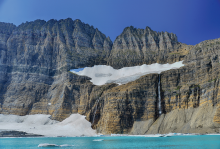
I KNOW WHAT it’s like to be baptized in the meltwater of a dying glacier. It feels like a plunge into all the emotions of living in our climate-changed world: joy, dread, awe, fear, love.
In August, a few of my college friends and I took a trip, something of a pilgrimage, to Glacier National Park in Montana. We wanted to visit the glaciers that are projected to die off in the coming decades. The Kootenai people call this place Ya·qawiswitxuki,“the place where there is a lot of ice.” It is a place burdened with names that it will hold on to even after the glaciers and ice disappear.
The geology of the park is like a cake cut open to show layers of sandstone, shale, and limestone — a portal into deep time. About 100 million years ago, in an event called the Sevier Orogeny, the mountains in Glacier formed as the forces of colliding tectonic plates thrust two billion years’ worth of sedimentary rock upward. Across 100,000-year cycles, glaciers formed and retreated, slowly whittling away at the rock and carving out dramatic valleys, moraines, arêtes and horns, cirques and tarns. During a simple four-hour hike, we walked through billions of years of sedimentation.
Walking through such a place makes this moment in history seem both insignificant and deeply important. Thousands of feet of layered sediment formed organically, with nearly no human influence, but the small sliver at the top will be markedly human. This Anthropocene layer in the geologic cake holds markers of nuclear bombs, cow manure, and a lot of plastic. It holds the most dramatic increase in carbon concentration and the accompanying increase in temperature. It holds the extinction of hundreds of creatures, which may soon include the western glacier stonefly and meltwater lednian stonefly, who require ice-cold clear streams to survive.
This layer is also the moment, a blink of an eye in geologic time, when the mighty glaciers disappear. It is estimated that by 2100, two-thirds of the world’s glaciers will be killed. The reality is more devastating in the eponymous national park, where all the glaciers are expected to be gone by the end of this century. I can’t predict all the impacts the park will feel over the next 75 years, but I imagine that the numerous hikers currently making pilgrimages to the glaciers will instead walk in funeral processions to plaques, like the one marking the death of the Okjökull Glacier in Iceland.

IF YOU THOUGHT Job had it bad, consider for a second the trials of Travis Dardar.
Dardar was born a Houma Indian in Isle de Jean Charles in Louisiana — whose residents are the first Americans that the federal government has officially designated as climate refugees, as it bought out their land before the sea could swallow it. So Dardar moved upstream to Cameron, La., and resumed his life as a fisherman — until an out-of-state company built a truly giant liquified natural gas (LNG) export terminal half a mile away and announced plans for another, 350 feet from his house. This time it was the fossil fuel company that bought him out, and so he’s moved yet further upstream — a man chased not once but twice from his home by the scourge of hydrocarbons.
That LNG buildout now underway in the Gulf and elsewhere — there are seven of these terminals operational already, with plans for 20 more — is the most extreme example of fossil fuel expansion in the U.S., even though it’s mostly flown under the radar. The fight against the absurd Willow oil project in Alaska, for instance, became a TikTok viral sensation, and millions of people signed petitions; but bad as it is, Willow will produce 1/20th of the carbon emissions associated with just one of the planned new LNG terminals, the CP2 project in Dardar’s old home of Cameron.
President Joe Biden blew it on Willow, breaking his pledge to block new drilling on federal lands, and it may endanger his hopes with young voters next year. Luckily for him, he gets another chance with these LNG projects, many of which are currently awaiting a certificate that they’re in the “public interest” from Biden’s Department of Energy.
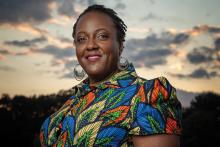
WHEN I WAS 8 years old, I fried an egg on the street. Well, I tried to fry an egg on the street. It had been a particularly brutal summer in Florida. On the days when the playground slides were too hot to go down, my mom would say, “It’s hot enough to fry an egg on the sidewalk!” I kept my eyes glued to that splattered yolk for two hours until a car tire brought the grand breakfast experiment to an end. Frying eggs on sidewalks was how I learned to conceptualize extreme heat.
When it comes to describing climate change urgency in Black communities, Heather McTeer Toney taps into something simple: streetlights. In Before the Streetlights Come On: Black America’s Urgent Call for Climate Solutions, she writes that when she was growing up, kids could play all day outdoors, but they had to be home “before the streetlights came on.” As twilight settled in and streetlights started to flicker, kids would call out, “Hurry up, we ain’t got all day!”
“Right now, that same call to action is carried in the waves of massive hurricanes, on the winds of devastating firestorms, and in the uncharacteristic heat of winter,” McTeer Toney writes. Using a familiar metaphor, she issues a call to action of her own.
Climate change and environmental justice is not foreign to McTeer Toney or the communities she writes about. At age 27, she was the first female and youngest person to serve as mayor of Greenville, Miss., where she was born and raised. As mayor, she brought the city out of debt and established sustainable infrastructure repair. For three years, she led the Environmental Protection Agency for the southeastern United States. While at the global nonprofit Environmental Defense Fund, she addressed environmental policy and community organizing within and beyond the U.S. This spring, McTeer Toney became executive director of Beyond Petrochemicals, a campaign to stop the rapid expansion of petrochemical and plastic pollution, particularly in the Ohio River valley and along the Gulf Coast.
McTeer Toney and her family attend Oxford University United Methodist Church in Oxford, Miss. I spoke with her by phone about her work, her book, and the hope her faith demands. — Christina Colón
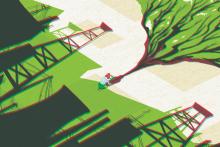
A RELATIVELY NEW front in the culture wars is emanating from the realm of finance: the push to increase financial investments that take into account “environmental, social, and governance” considerations. What is known in the finance industry as ESG has grown considerably over the past decade. According to the Global Fossil Fuel Divestment Commitments Database, the amount of wealth divested from fossil fuels worldwide has grown from $52 billion in 2014 to more than $40 trillion last year. But the increased visibility and prominence of ESG investing has triggered a backlash, with at least seven GOP-controlled states enacting anti-ESG policies and 15 others introducing bills to disallow the application of ESG principles in state investments such as pensions.
The anti-ESG push is coming from the usual suspects. Texas is heavily involved, due to the prominence of the fossil fuel industry in the state’s economy. Right-wing groups such as the Heritage Foundation and the American Legislative Exchange Council have also been big promoters of model anti-ESG legislation. West Virginia Attorney General Patrick Morrisey has formed a coalition with more than 20 of his counterparts to challenge the Securities and Exchange Commission’s ability to implement a climate disclosure rule, a case that could end up at the Supreme Court and hobble the executive branch’s ability to interpret and act on congressional statutes. Apparently, many conservative activists and politicians are only champions of the “free market” when it advances their ideological agendas.
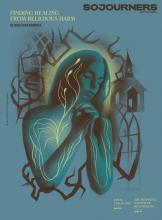
Healing from religious harm: Why compassionate community is part of the journey.
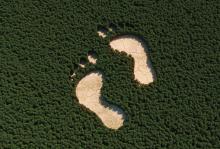
IN COLOMBIA, the highest rainfalls in 40 years had reduced coffee production by nearly one-third at the end of 2022. In the United States, tornado deaths for the first quarter of 2023 were already nearing the annual average. In Jakarta, Indonesia, the government barrels forward with constructing a 29-mile sea wall to protect the city, which is sinking under rising sea levels.
Everywhere, the planet is changing. Land once known for certain weather patterns, flora, and fauna is becoming strange and unfamiliar. Ways of life forged from old patterns are crumbling. Communities scramble to find new ways to farm, fish, graze, and live in what increasingly feels like uncharted territory.
Many have taken up the language of grief and loss to guide us through this turbulent era. Australian philosopher Glenn Albrecht even coined the term “solastalgia,” which describes “the homesickness you have when you are still at home.” We long for the forests and meadows of our childhoods, alive with spring peepers and monarch butterflies, which today seem diminished or have completely disappeared, paved over by strip malls and subdivisions. The land that shaped us is still there, but it’s not the same.
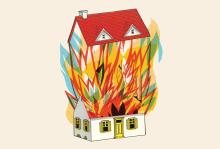
THERE IS A reasonable argument, I suppose, that Christians should eschew insurance — after all, the lilies of the field and the birds of the air, and letting tomorrow be anxious for itself. But almost all of us have it, and it is one of the most interesting parts of our economy: In essence, we’ve asked insurers to be the people who understand the concept of risk for us.
So, we should probably pay some attention when — as happened this spring — State Farm and Allstate both announced they would no longer be writing new homeowners policies in California. Why? In a word, fire — or, as that good neighbor State Farm put it, “rapidly growing catastrophe exposure.” There’s simply too much chance that any given home in the Golden State will burn to the ground in any given year, and when it does it costs too much to replace. Something of the same is happening along the Gulf Coast, where increasingly state governments are becoming insurers of last resort — and where, when a hurricane approaches, economists now have models to show if the destruction is likely to bankrupt any companies.
You would think that this experience would be enough to convince insurers to become activists in the climate fight. After all, their basic tool — the actuarial table, which lets them predict and thus hedge risk — depends on the world working in the future as it has in the past, something that’s increasingly a sucker’s bet. But truth be told, insurers go on investing vast sums in the fossil fuel industry, and even underwriting new pipelines or coal mines. (One is reminded of the Leninist dictum that capitalists will sell you the rope with which to hang them.)
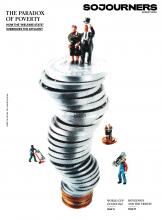
How the “welfare state” is designed to subsidize affluence rather than fight poverty.

Some insurance companies still use the phrase “act of God” to describe fires or other natural disasters for which no human agent can be held responsible. But we need to stop putting God on the hook: These disasters are happening because governments are drunk on the fossil fuel industry’s deadly Kool-Aid.
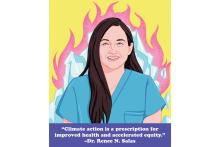
MANY SCRIPTURAL METAPHORS for transformation involve variations on the “open my eyes that I may see” plea of Psalm 119; the writer of Ephesians 1, for instance, prays for the enlightenment of the “eyes of your heart” so that “you may know the hope to which he has called you.” Various authors in this issue wrestle with similar images. For example, our Prelude, which draws on the writings of French Jesuit Pierre Teilhard de Chardin, refers to the “worst failing of our minds” as the inability “to see the really big problems” that “are right under our eyes.”
Much of our culture, Zachary Lee explains in his cover feature on Hollywood “spectacle,” serves to distract us from those “really big problems” and makes it difficult for us to see in different, more hopeful ways. Bible savant Walter Brueggemann, who knows a thing or two about alternative ways of perceiving, said that prophets “are able to imagine the world other than the way that is in front of them.” But that task, that “prophetic imagination” of seeing with enlightened eyes, isn’t reserved just for prophets: It’s really an invitation to all of us who seek a better world.
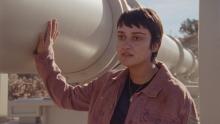
Can blowing up a pipeline be a form of nonviolent protest? Director Daniel Goldhaber’s new film, How to Blow Up a Pipeline, makes a strong case in the affirmative — even if the activists at its center could care less about being called “terrorists” by the American empire.
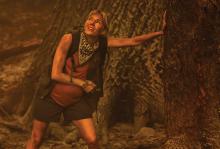
New Earth?
The TV show Extrapolations, featuring Meryl Streep and Forest Whitaker, offers eight terrifying visions of how climate-changed humanity’s unchecked consumption will harm Earth. The interwoven stories aim to inspire climate action, even as they disturb.
Apple TV+
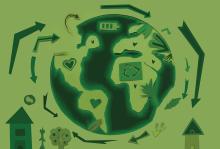
I NODDED ALONG with everything in the holistic permaculture course until day four, when things went off the rails. My family and I were at a farm in Bolivia, volunteering and learning about land design, groundwater recharging, alternative energy technologies, and returning fertility to the earth. Day four’s topic was community-building, which sounded innocuous enough.
Our host and instructor was a man from New Zealand who has farmed two acres in a remote Bolivian valley for nearly a decade. He talked about the importance of local decision-making, how focusing on global problems over which we have little influence can leave us feeling disempowered. Human-induced climate change, he added, is another story the oligarchs at the top are telling to stoke our fears and get us to surrender our freedoms. That and the pandemic.
Our host’s views are extreme. But he is among a growing group of back-to-the-land conservatives who don’t fit my categories. He disbelieves mainstream climate science, yet he is installing solar ovens, composting toilets, and bioconstructed buildings on his property. He scoffs at “wokeism,” which he sees as another form of top-down control, yet he deeply respects the local Indigenous community and attends the Quechua-only neighborhood meetings with surrounding farmers.

When most people consider the holy month of Ramadan, the 30 days of fasting and reflection for Muslims, they may not picture a millennial in a hijab connecting the Qur’an with environmental justice through Instagram hashtags like #greenramadan and #ecomuslim. But Saarah Yasmin Latif is on a mission to help people of all religious traditions connect their faith with individual and collective acts to sustain the earth.
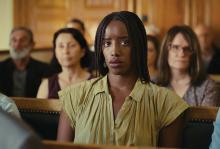
Humanizing the Harrowing
The French film Saint Omer follows the trial of a Senegalese woman accused of murdering her child. The docudrama is a condemnation of the criminal legal system, and a reminder that no one is the totality of the worst thing they’ve done.
Les Films du Losange

What does it look like to parent children in line with the radical values of restorative justice and communal care in a world of injustice, where safety and community are not equally available to all? As the threats of fascism and climate change make parenting seem dangerous or even unethical to many people, what principles can guide us in the radical risk of making new life?
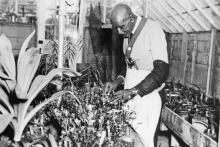
Over his career, Luther Williams has seen the impact of racist education standards and a lack of Black representation in science.
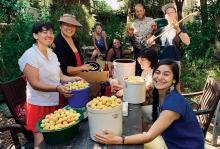
WHEN I SPEAK on the phone with Anne Symens-Bucher, she tells me about the end of St. Francis of Assisi’s life. Francis “was losing sight, suffering from the pain of the stigmata, and on the margins of the community that had grown up to follow him,” Symens-Bucher explains. “This is the moment he writes the ‘Canticle of Creation.’” Symens-Bucher is one of the founders of Canticle Farm in Oakland, Calif., a community of eight households where the fences are taken down, giving access to a large garden in the middle. Canticle Farm is made up of people who, in Symens-Bucher’s words, are “experimenting at the intersections of faith-based, social justice-based, and Earth-based nonviolent activism.” In his canticle, after which this community is named, Francis praises God from a deep sense of kinship with all creation. He sings of “brother fire,” “sister water,” “brother wind,” “mother earth.” Birthed as Francis approaches his own death, it is a vivid, sober-minded song of the interconnectedness of all life.
Western colonialist people have often failed — or refused — to recognize this interconnectedness. Earth, animals, plants, and people suffer from our (and I say “our” because I speak as a white U.S. citizen) denial of this oneness. Soils are depleted, waters and air are poisoned, and sea levels rise and temperatures warm, threatening the most vulnerable among us immediately, and all of us eventually. Perhaps in this time of environmental crisis, we might find a “canticle” moment, one that renews our kinship with creation.
Liz Carlisle explores these questions in Healing Grounds: Climate, Justice, and the Deep Roots of Regenerative Farming. As an environmental scientist looking for healthy soil, Carlisle interviews experts who are Black, Indigenous, and people of color — scientists and farmers engaged in work ranging from bringing buffalo back to the prairie ecosystems of Montana to growing mushrooms on ancestral forest land in North Carolina. Through the process, she realizes that if we’re serious about fighting climate change by rebuilding soil carbon, we’re going to have to address the very roots of the colonialist systems in which we live.
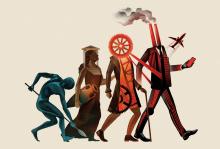
PHILIP JENKINS’ REMARKABLE Climate, Catastrophe, and Faith: How Changes in Climate Drive Religious Upheaval leads off with Voltaire: “Three things exercise a constant influence over the minds of [humankind] — climate, government, and religion ... That is the only way of explaining the enigma of this world.”
Climate and geology are now the new prisms for our shared discernment of how we are to live in our own time and place as followers of Christ. We’re driven to centering climate because we can no longer live with the expectation of the balanced climate of the last 12,000 years, the geologic epoch called the late Holocene. We are now in a new geologic epoch: the Age of the Human, or the Anthropocene.
Anthropocene reality leaves Christian ethics nowhere to hide. Nowhere to hide because unprecedented cumulative human powers doubled down on planet-spanning changes that launched the first geological epoch created by human choice and action. The fact that human choice and action has done this means that everything, including extinction, turns on ethics. As Christians, we can look away and abdicate our responsibility, but we cannot escape the massive human presence that lines out our lives — and all life. We’ve become totalizing creatures. We humans are, for the first time, both ark and flood.
This extraordinary power has been recognized for a while. In 1944, Dietrich Bonhoeffer wrote that the unprecedented powers of modern science and technology led to a world in which “it all comes down to the human being,” a world where “everything turns upon humanity.” He thus set out to reconceive human responsibility for a world that had come of age. For Bonhoeffer, “world come of age” was not a statement of moral maturity. It was a statement of moral accountability. People who legally come of age at 18 or 21 are accountable, whether they exercise their agency maturely or not. When everything turns on humanity, Bonhoeffer said, the whole human world has arrived at that point of accountability.
A current term for human powers and their collective impact is “assisted evolution.” But the phrase is deceptive because it hides the depth, breadth, and temporal reach of those powers. Does the phrase “assisted evolution” reveal that the carbon people produce has the ability to alter marine chemistry, flood coastlines, strip glaciers “to bare bones,” embolden deserts, warp the circulation of ocean currents, “supercharge extreme weather events,” and rearrange “the distribution of animal, plant, and microbial species across the globe,” as author David Farrier puts it? This isn’t evolution “assisted”; it’s evolution hacked and hijacked.
